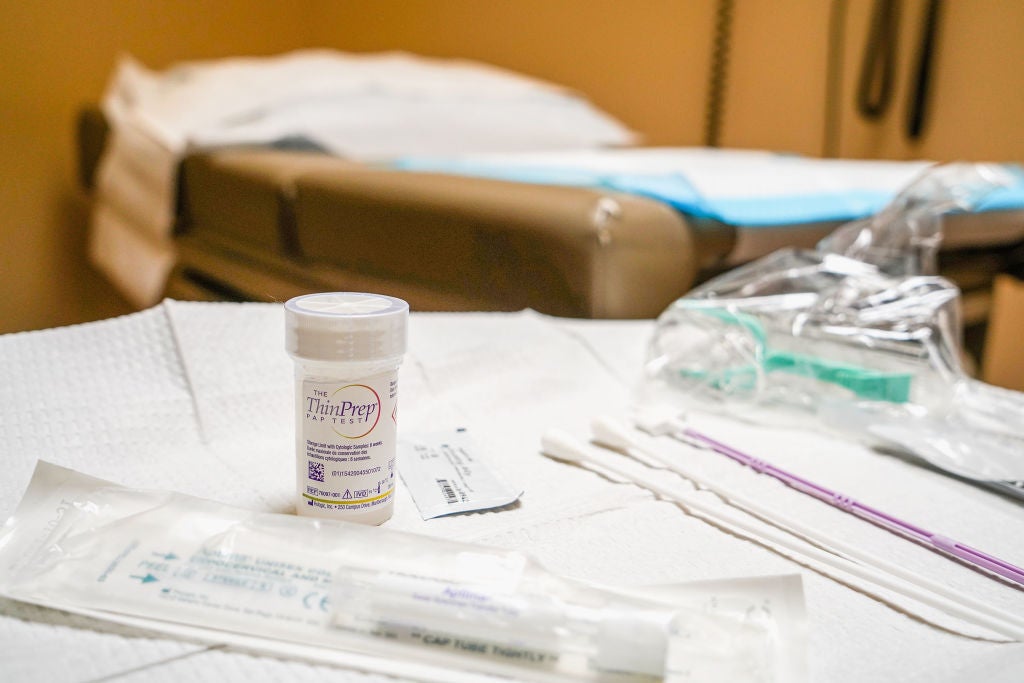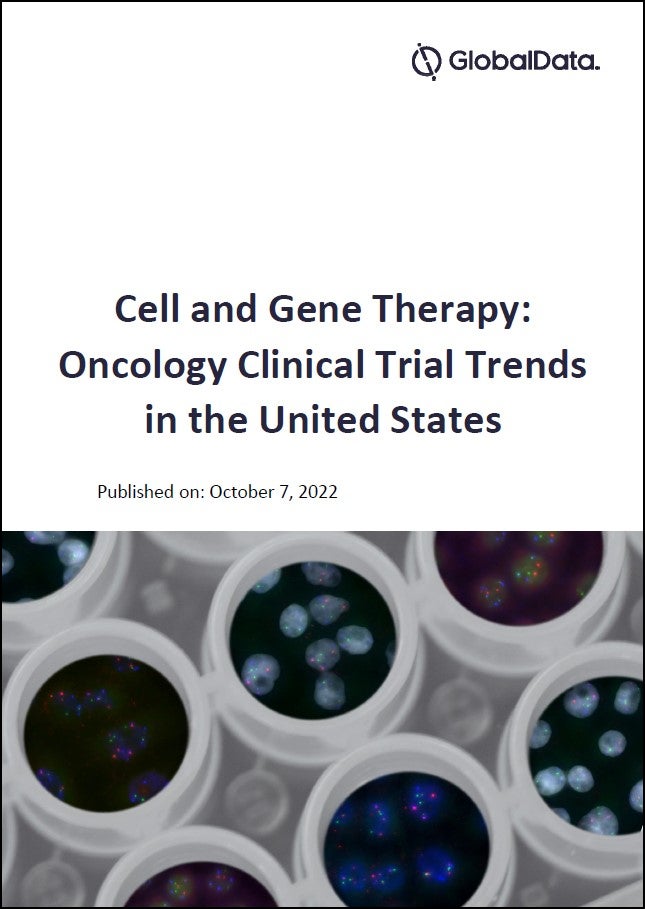
Need to know:
- Keytruda use in 1L may mean lesser rationale for checkpoint inhibitor monotherapy in 2L
- Libtayo and balstilimab use in 2L regardless of PD-L1 status an advance over Keytruda 2L
Agenus’s balstilimab and Sanofi/Regeneron Pharmaceuticals’ Libtayo (cemiplimab) are likely to have their appeal curbed in second-line (2L) cervical cancer upon the anticipated reshuffle in frontline (1L) therapy, experts said. Once checkpoint inhibitors get adopted as upfront treatments, the scope for using balstilimab or Libtayo will shrink since they target the same pathway.
How well do you really know your competitors?
Access the most comprehensive Company Profiles on the market, powered by GlobalData. Save hours of research. Gain competitive edge.

Thank you!
Your download email will arrive shortly
Not ready to buy yet? Download a free sample
We are confident about the unique quality of our Company Profiles. However, we want you to make the most beneficial decision for your business, so we offer a free sample that you can download by submitting the below form
By GlobalDataData with both balstilimab and Libtayo indicate significant enough improvements to encourage their approval as therapies for recurrent cervical cancer. Both are effective regardless of biomarker status, with Libtayo having an overall survival (OS) advantage over chemotherapy. Merck’s Keytruda (pembrolizumab) is currently the only checkpoint inhibitor used in the recurrent 2L setting and is restricted to those with high programmed death-ligand 1 (PD-L1) expression.
In June, however, Merck announced positive results from the 1L Phase III KEYNOTE-826 trial studying Keytruda regardless of PD-L1 status. The likely inclusion of Keytruda, and potentially others like Roche’s fellow checkpoint inhibitor Tecentriq (atezolizumab), will change the treatment landscape. If these checkpoint inhibitors are used in the 1L, it may reduce the allure for using other checkpoint inhibitors like Libtayo or balstilimab in the 2L.
Nonetheless, if checkpoint inhibitors are used in combination with other therapies in the 2L, they could still induce clinically relevant responses. Balstilimab is already being explored in combination with Agenus’s anti-CTLA-4 inhibitor zalifrelimab in a Phase I/II study with early positive efficacy data in recurrent patients. However, the trial does not include checkpoint inhibitor-treated patients, so extrapolation may be difficult, experts said.
While Merck has not yet released detailed KEYNOTE-826 data, it will submit the data to regulatory authorities. An Agenus spokesperson declined to comment on balstilimab use after recurrence from a checkpoint inhibitor, but confirmed balstilimab’s Prescription Drug User Fee Act (PDUFA) date of 16 December.
Sanofi and Regeneron have announced a regulatory submission for Libtayo will be done in 2021. They did not respond to a comment request.
As per GlobalData Consensus Forecasts, overall sales of $2.5bn and $271m are estimated for Libtayo and balstilimab, respectively. Agenus’s market cap is $1.15bn, Sanofi’s market cap is $129.44bn and Regeneron’s market cap is $62.12bn. One analyst also estimated peak sales of $100m for the balstilimab/zalifrelimab combination.
2L options will change with new 1L player
Recent clinical data demonstrates balstilimab’s and Libtayo’s potential approval and use after progression from frontline chemotherapy-based therapies. Libtayo reduced the risk of death by 31%, which led to the Independent Data Monitoring Committee (IDMC) halting the Phase III trial, as per a 15 March press release.
In a European Society for Medical Oncology (ESMO) 2020 update, an overall response rate (ORR) of 14% among 160 cervical cancer patients was reported in a Phase I/II balstilimab study. Keytruda secured an accelerated approval in June 2018 for recurrent cervical cancer after or during progression on chemotherapy, based on a 14.3% ORR.
In June, Merck announced that the KEYNOTE-826 study of Keytruda and chemotherapy with or without Roche’s Avastin (bevacizumab) met its OS and progression-free survival (PFS) endpoints. Fellow checkpoint inhibitor Tecentriq is in a similar 1L Phase III BEATcc study with a March 2023 estimated primary completion date.
While detailed KEYNOTE-826 data is pending, a large portion of patients will likely receive Keytruda as a 1L therapy upon a likely approval, said Memorial Sloan Kettring Cancer Center medical oncologist Dr Dmitriy Zamarin. If Keytruda is used accordingly, the likelihood of a patient responding to another checkpoint inhibitor after progression is quite low, said Zamarin. However, this would be excluding situations where the 1L drug was stopped due to a reason other than disease progression, like tolerability concerns, he added.
The ORR in checkpoint inhibitor-naive patients is relatively low to begin with in comparison to other tumours, so the likelihood of a response after another anti-PD-1 drug is low, agreed said Dr Michael Frumovitz, professor at the University of Texas MD Anderson Cancer Center’s Department of Gynecologic Oncology and Reproductive Medicine. Given these factors, experts were unclear if Libtayo or balstilimab could still be used if a patient received Keytruda in the 1L.
As recurrent disease is almost always incurable, immunotherapy will have a better value when used as an upfront treatment where it can prevent patients from recurring and open the possibility for longer responses or functional cure, said Frumovitz. In KEYNOTE-826, the Keytruda combination is attractive because its use would not require drastically changing the current standard of care (SOC), but instead just adding Keytruda, said Weill Cornell Medicine professor of clinical obstetrics and gynecology Dr David Fishman.
Potential for combinations to bolster 2L efficacy
It is unclear whether another checkpoint inhibitor can be used in recurrence after 1L immunotherapy, but based on the experience in other cancers like melanoma, checkpoint inhibitor combinations may be the way to go, said Frumovitz.
Phase I/II data shows the combination of balstilimab with zalifrelimab led to an ORR of 22% among 143 patients. The balstilimab/zalifrelimab combination’s ORR is higher than is expected for a checkpoint inhibitor alone in the 2L, particularly in the PD-L1 negative population. As such, it is worth exploring in the post-PD-L1 setting, said Zamarin. Other anti-PD-1/anti-CTLA-4 combinations like Bristol Myers Squibb’s Opdivo (nivolumab)/Yervoy (ipilimumab) have shown the relevant ORR, particularly in chemotherapy-naïve cervical cancer patients, he added.
Nonetheless, post-checkpoint inhibitor decisions cannot be made by extrapolating efficacy with combinations like balstilimab/zalifrelimab since patients in those studies had not received a checkpoint inhibitor as frontline therapy, said Dr Alexandra Leary, medical oncologist at Institut Gustave Roussy’s Gynecological Cancer Unit in France. Both Libtayo’s and balstilimab’s recurrent setting studies excluded patients who had previously received checkpoint inhibitors.
Benefit driven by patient subgroups to be determined
The 1L KEYNOTE-826 study enrolled patients regardless of their PD-L1 status. However, Frumovitz cautioned against assuming all patients received the same level of benefit. Even if Keytruda has a benefit in the overall intent-to-treat population, it remains to be seen if that improvement is also seen in PD-L1-negative subgroups, Leary agreed. It would be important to analyse subsets with squamous or adenocarcinomas to understand which patients are most likely to benefit, said Fishman.
In the 2L, checkpoint inhibitor efficacy with Libtayo and balstilimab is better than chemotherapy, regardless of the biomarker. However, one caveat is the fact the current SOC does not involve 1L immunotherapy use, experts said.
However, Libtayo’s 3.5-month median OS improvement, while statistically significant, is less than ideal, Frumovitz said. Zamarin noted there is a lack of effective 2L options, with chemotherapy ORR in the 2L only around 10%. Tumours tend to be inflamed in a nonspecific manner, so responses are either low or nonexistent in the recurrent setting, said Leary. Thus, the Phase III Libtayo data would lead to an approval in the 2L, Zamarin added.
Moreover, Libtayo’s data is clinically significant because its efficacy is accompanied by a better-tolerated regimen than chemotherapy, Zamarin said. The field has become adept at managing immune-mediated adverse events, he added. Grade 3 or higher adverse events (AEs) were reported in 45% of patients in the Libtayo arm and 35% of patients in the chemotherapy arm. Even those who discontinue treatment due to adverse events can continue to have responses for a long time, said Zamarin.
Checkpoint inhibitors all appear to have similar efficacies in the 2L setting, said Leary, adding balstilimab’s data also looks clinically relevant. A duration of response of 15.4 months and an ORR of 14% was reported with balstilimab alone.








